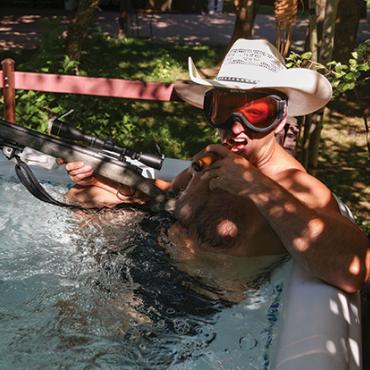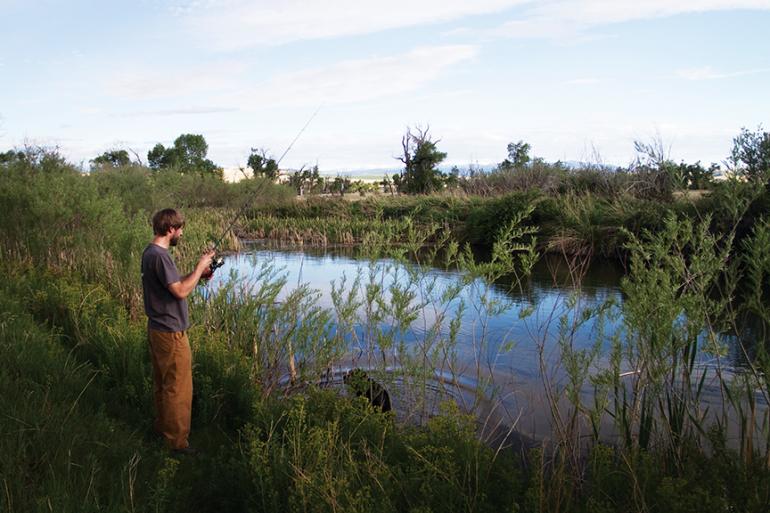Master the Bait
Bait-fishing basics.
Unless your father was the Reverend John Maclean, chances are you caught your first fish on a worm. Dad attached the slimy thing below a big red bobber; it squirmed and writhed while you made a clumsy cast into the pond. Soon your line went tight, and a spirited fish surged and darted while you squealed with delight.
The reason your dad chose bait is the same reason many Montana anglers do: it’s the simplest and most productive way to fish. No fancy gear, no difficult technique to master, and darn good odds of a full stringer. All the Bozeman-area bait-fisherman needs is a rod and reel, a few small hooks, a bag of split-shot, and a container of bait. Everything else is a luxury—and luxury doesn’t make good bedfellows with a box of slimy invertebrates.
What to Use
To plumb the rivers of southwest Montana, there are really only two important critters: crawlers and hoppers. Both are irresistible to trout and readily available to humans.
Threading a fat, juicy earthworm on a hook is a time-honored tradition in most Montana fishing families, and for good reason—it takes a wily trout indeed to resist such a delectable and calorie-rich meal. Available at every sporting-goods store and gas station in the region, a dozen crawlers promise a productive day on the water and a full creel for dinner. Always check the box before buying—you want fat, healthy worms that writhe and hold to the hook. If they’re listless or thin, choose another box.
Come August, grasshoppers fill the fields of southwest Montana—and the bellies of hungry trout. Punch a few air holes in a soda can and comb the grasses early in the morning, while the hoppers are still lethargic. Creep close and then make a quick snatch. Bigger specimens are better, but even a medium-sized hopper squirming on the end of your line will bring a trout in hard. Stuff 20-25 in a can and head to the river.
Technique
There’s an art to bait fishing, just like anything else, and many of the same basic principles of fishing apply. First and foremost: keep your line tight! Slack line means missed hits and gut-hooked fish. Pay attention and always be ready for a strike.
Find a good, fishy-looking hole or run. Position yourself near the top and cast 10-15 feet upstream, allowing the bait to bottom out before hitting the run. Use enough weight to get it down, but not so much that it’s constantly snagging up.
Bounce the crawler or hopper along the bottom, keeping your rod high and waiting for a strike. Set the hook when it feels right—at first, you’ll be all over the map: sometimes too early, sometimes too late, sometimes right on. Either way, you’ll have action, and with practice your timing will improve considerably.
Ethics
Until you’ve developed a high level of skill, bait-fishing is a way to fill a stringer, not set records for most trout in a day. Many fish caught on bait are hooked deep, and thus should be kept and eaten rather than tossed back to eventually die. With enough time and practice, you’ll learn to lip-hook the bulk of your fish; but until then, stop fishing when you’ve caught your limit. Nothing tastes better than fresh-caught trout served with a clean conscience.
Mike England is the editor of Cast and a lifelong bait, spin, and fly fisherman.












